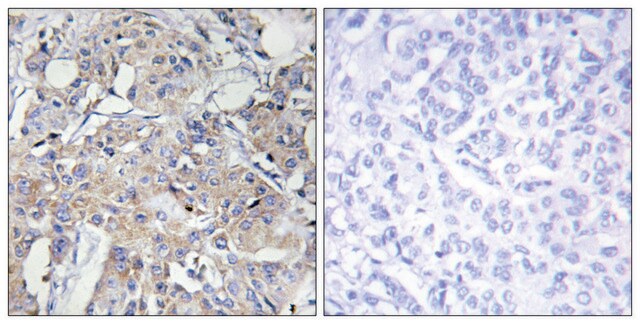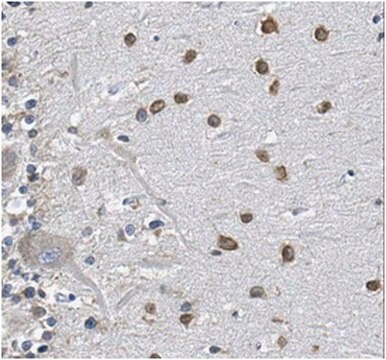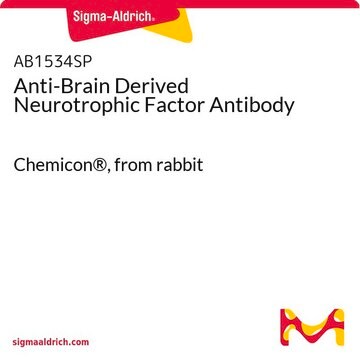MABC91
Anti-Atg18 (WIPI-2) Antibody, clone 2A2
clone 2A2, from mouse
Sinônimo(s):
WD repeat domain phosphoinositide-interacting protein 2, WIPI-2, WIPI49-like protein 2
About This Item
Produtos recomendados
fonte biológica
mouse
Nível de qualidade
forma do anticorpo
purified immunoglobulin
tipo de produto de anticorpo
primary antibodies
clone
2A2, monoclonal
reatividade de espécies
human
técnica(s)
immunohistochemistry: suitable (paraffin)
western blot: suitable
Isotipo
IgG1κ
nº de adesão NCBI
nº de adesão UniProt
Condições de expedição
wet ice
modificação pós-traducional do alvo
unmodified
Informações sobre genes
human ... WIPI2(26100)
Descrição geral
Especificidade
Imunogênio
Aplicação
Apoptosis & Cancer
Apoptosis - Additional
Qualidade
Western Blot Analysis: 0.5 µg/mL of this antibody detected Atg18 in 10 µg of human testis tissue lysate.
Descrição-alvo
6 isoforms exist with molecular weights ranging from 42 kDa to 48 kDa
forma física
Armazenamento e estabilidade
Nota de análise
Human testis tissue lysate
Exoneração de responsabilidade
Not finding the right product?
Try our Ferramenta de seleção de produtos.
Código de classe de armazenamento
12 - Non Combustible Liquids
Classe de risco de água (WGK)
WGK 1
Ponto de fulgor (°F)
Not applicable
Ponto de fulgor (°C)
Not applicable
Certificados de análise (COA)
Busque Certificados de análise (COA) digitando o Número do Lote do produto. Os números de lote e remessa podem ser encontrados no rótulo de um produto após a palavra “Lot” ou “Batch”.
Já possui este produto?
Encontre a documentação dos produtos que você adquiriu recentemente na biblioteca de documentos.
Artigos
Autophagy is a regulated process involved in cell growth, development, and recycling of cytoplasmic components in cells.
Nossa equipe de cientistas tem experiência em todas as áreas de pesquisa, incluindo Life Sciences, ciência de materiais, síntese química, cromatografia, química analítica e muitas outras.
Entre em contato com a assistência técnica






